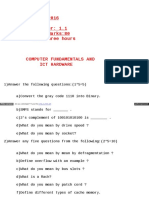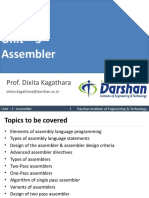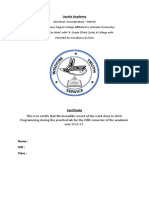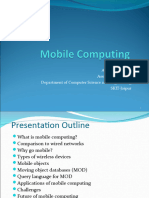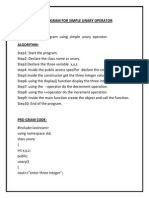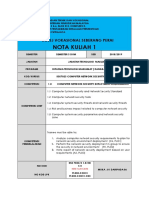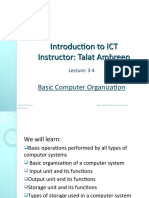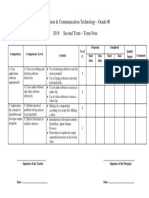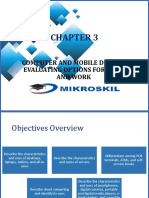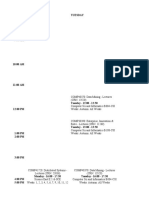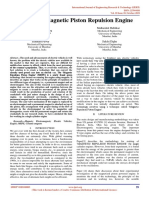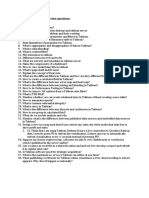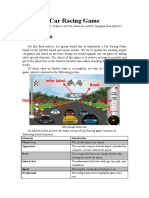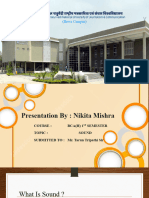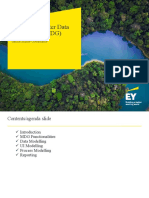0% found this document useful (0 votes)
557 views40 pagesCHAPTER 3 - Computers and Mobile Devices
This document summarizes different types of computers and mobile devices, including desktops, laptops, tablets, smartphones, servers, supercomputers, terminals, game devices, and embedded computers. It describes characteristics and examples of each type of device. The document also discusses ports and connections, ways to protect hardware, and health concerns related to technology use.
Uploaded by
Reygenan ForcadelaCopyright
© © All Rights Reserved
We take content rights seriously. If you suspect this is your content, claim it here.
Available Formats
Download as PDF, TXT or read online on Scribd
0% found this document useful (0 votes)
557 views40 pagesCHAPTER 3 - Computers and Mobile Devices
This document summarizes different types of computers and mobile devices, including desktops, laptops, tablets, smartphones, servers, supercomputers, terminals, game devices, and embedded computers. It describes characteristics and examples of each type of device. The document also discusses ports and connections, ways to protect hardware, and health concerns related to technology use.
Uploaded by
Reygenan ForcadelaCopyright
© © All Rights Reserved
We take content rights seriously. If you suspect this is your content, claim it here.
Available Formats
Download as PDF, TXT or read online on Scribd
/ 40





